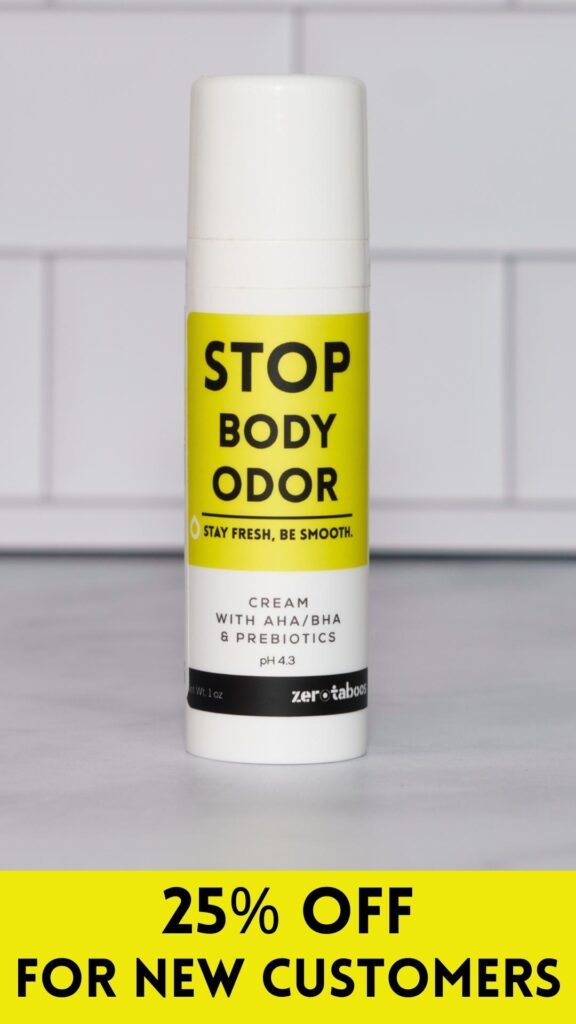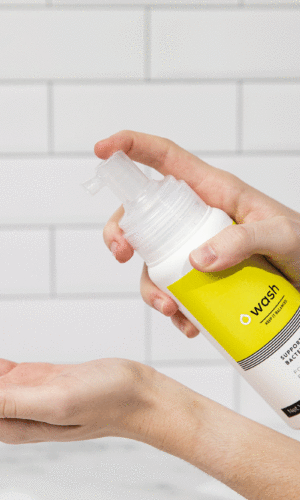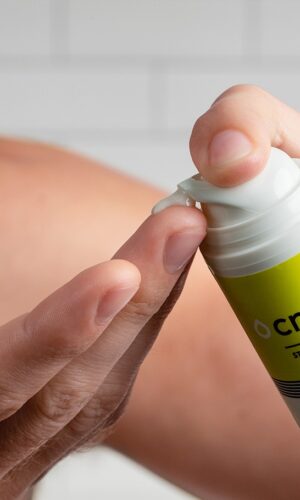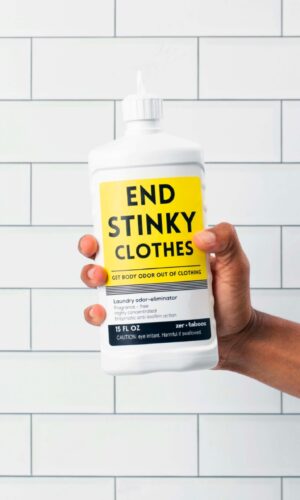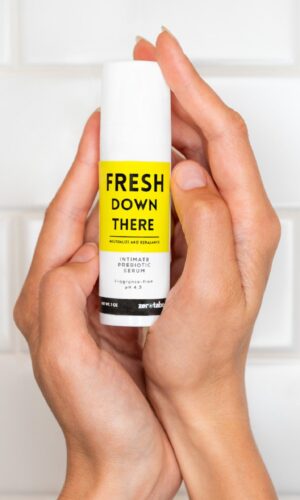
Date
What are AHA and BHA? What is the difference?
AHA and BHA are both exfoliating acids. AHA stands for alpha-hydroxy acids. AHA is a water-soluble chemical exfoliant that can be made of sugar cane, fruits, or milk. AHA is often added to skincare products as they are effective in removing excess oil, dirt, and dead skin cells (the top layer of the skin) and allow other products to penetrate the skin better. The exfoliation extent provided by AHA depends on their type, concentration, pH, and other ingredients included in the product. The most popular forms of AHA include the following acids:
- Glycolic Acid
- Citric Acid
- Lactic Acid
- Mandelic Acid
BHA stands for beta-hydroxy acids, which are oil-soluble chemical exfoliants. Unlike AHA, BHA can penetrate the skin and reach sebaceous glands, which produce and secrete sebum, lubricating the skin and hair. BHA is derived from the bark of the willow tree, sweet birch bark, or wintergreen leaves. The concentration of BHA in products is often lower, and you will find them at the bottom of the ingredients list. The most popular forms of BHA include these acids:
- Salicylic Acid
- Tropic Acid
- Willow Extract
AHA and BHA are often used together as they target different aims.
What is chemical exfoliation, and how is it different from physical exfoliation?
Chemical exfoliation is the process of removing dead skin cells, dirt, oil, and sweat from the skin surface by topical application of acids (or products containing acids). This procedure helps to get rid of skin problems like acne, clear and tighten pores, even out skin tone and texture, and alter the skin pH.
Some acids work on the surface of the skin (AHA), and some get deeper (BHA), increasing the skin cell turnover.
While performing physical (or mechanical) exfoliation, we remove only the outer layers of the skin with scrubs, brushes, loofa, etc. So there is nothing to penetrate deeper into the skin, like when you are using acids; thus, physical exfoliation alone may not be that effective. Moreover, this method can be too abrasive and harsh on the skin, especially on gentle body parts.
There is also a chemical peeling, which is similar to chemical exfoliation, but it involves stronger acids concentration. The procedure is handled by the dermatologist, who chooses the acids according to your skin type and the goal of the procedure. A chemical peel is usually aimed to treat wrinkles, discolored skin, and scars on the face. It is a “controlled injury” to the skin, and it takes some time to recover from the procedure, as the skin will get red, irritated, and swollen.
Can you replace deodorant with AHA and BHA?
Yes, you can, and getting rid of body odor is not the only benefit here.
Body odor is the result of bacterial activity. Microbes feed on odorless sweat and release their smelly byproducts – thioalcohols. The more body odor-producing bacteria you have, the worse you smell. These bacteria (Corynebacterium, Staphylococcus, and Cutibacterium) feed on nutrients they find in odorless sweat produced by apocrine sweat glands. When bacteria consume the chemicals in sweat, they convert them into thioalcohols – pungent compounds responsible for the smell.
Lowering the skin pH can help to reduce the amount of odor-causing bacteria. While the skin pH on most body parts ranges from 4.1 to 5.8, the pH of the underarms is physiologically higher and can reach 6.5, and bacteria thrive in this environment. Acid exfoliants normally have a pH of 3-4; thus, using them on the skin temporarily makes the skin’s pH lower (acidifies it).
Besides, we need exfoliation on our armpits because this place has a high porosity. Pores are openings in the skin around hair follicles and sweat glands through which the sweat and sebum move to the surface of the skin. Underarms are dark and damp places, so pores there can often get clogged with sweat and chemicals, especially if you regularly use conventional deodorants. So exfoliating the armpits’ skin is a good idea, even if you are not planning on switching to aluminum-free products.
Natural deodorants without aluminum alter underarms’ pH too. Many of them make your skin more vulnerable to inflammation and lead to an unfavorable shift in the skin microbiome. We checked the pH of a few natural deodorants, and they were either too alkaline or too acidic. You can check out the results of our experiment in this video.
So if you think about going deodorant free, it would be a better choice to exfoliate and acidify your armpits with something formulated specifically for underarms (and groin), like this CREAM with a pH of 4.3. AHA and BHA in the CREAM will balance the microbiome and exfoliate the skin, making it lighter and preventing razor bumps and ingrown hair.
Does your groin sweat?
It is normal to have a sweaty groin, as we have sweat glands there too. The groin is a warm and dark place, just like the underarms, which are covered with clothes most of the time, so it is only natural that it is sweaty.
Although groin sweating is a natural process, it can cause discomfort and result in chafing, rash, irritation, and itching. Read more about chafing from wet wipes here.
The best choice here is just keeping good hygiene of your groin, like, regular washing and underwear changing, trimming, or shaving pubic hair.
However, if you decide that you need additional help, think twice about the products you use. Some recommend applying the same antiperspirants you use for your underarms, but we wouldn’t advise you to do so. Antiperspirants contain way too many chemicals, and applying them to a sensitive area like the groin, which is also extremely close to your genitals, may cause microbial imbalance. The same goes for freshening sprays. They often contain bicarbonate and alcohol, and spraying these ingredients anywhere near your genitals will make you more susceptible to the overgrowth of unwanted bacteria and yeast, which, in the long run, will only produce more body odor.
What products should you choose then? First of all, wash your groin with plain warm water or gentle products that say “fragrance-free”, “microbiome-friendly”, or “pH-balanced”. We recommend this Wash, designed specifically to fight bacteria responsible for body odor and infections. Avoid any antibacterial products and soaps, which are majorly alkaline and have a pH of 9-10.
Exfoliating the pubic area can also help with body odor problems. Applying a gentle product with AHA/BHA to your groin skin will not only restore microbial balance, decreasing body odor but it will even out skin tone and help to get rid of razor bumps. A great bonus, especially before bikini season, isn’t it? Thus, unlike chemicals in antiperspirants and freshening sprays, acids lower the skin’s pH, which is favorable for your private area.
Types of acids and their benefits
Alpha-hydroxy acids
Our skin cells naturally exfoliate on their own. Skin cells move from deep to superficial layers and slough off. However, this process can slow down due to sun damage, symptoms of aging, lifestyle, and environmental factors, so over time, dead skin cells build-up can lead to itching, dry skin, clogged pores, acne, hair loss, and, in some places, body odor.
Being chemical exfoliants, alpha-hydroxy acids (AHA) support and increase skin cell turnover by removing dead skin cells and revealing fresh new ones. Thus, AHA can clear pores and reduce their size, minimize wrinkles appearance, improve mild hyperpigmentation spots and scars, and lighten skin tone. Let’s go over several forms of AHA.
Glycolic acid is one of the most popular and well-studied acids used in multiple skincare products. It also has one of the smallest AHA molecules. Thus, it can penetrate the skin deeper than other acids.
According to the study, a 10% glycolic acid-containing oil-in-water emulsion improves mild acne. It also helps with antiaging, moisturization, skin whitening, and body odor. Our skin pH ranges between 4.1 and 5.8, but armpit pH can reach 6.5. When we use conventional deodorants with aluminum salts or natural deodorants with baking soda, in the short term, they decrease the amount of body odor-producing bacteria, but in the long run, they compromise the normal pH, and we immediately stink if we forget to apply a deodorant. Glycolic acid, on the other hand, rebalances the normal skin pH and skin microbiome so that the amount of body odor-producing bacteria is reduced.
There are plenty of products formulated specifically for fighting body odor. For example, antiodorant CREAM contains glycolic acid, lactic acid, and salicylic acid (more about them below). This combination shifts the balance against body odor-producing bacteria, prevents ingrown hair, and smoothes skin tone. It is a perfect alternative to conventional deodorants.
Citric acid is considered a mild acid and has similar exfoliating properties as glycolic acid. It is a natural compound concentrated in citrus fruits. Citric acid removes dead skin cells and helps to keep the skin moisturized. We add citric acid to our Wash which helps to fight opportunistic bacteria and naturally supports normal skin pH.
Mandelic acid is another mild acid of slow action – its molecule size is twice as big compared to glycolic acid, so it takes longer to penetrate the skin. It is mostly used for treating acne, hyperpigmentation, freckles, signs of aging, and excessive sebum production.
Lactic acid is also more gentle than glycolic acid due to its slightly bigger molecule size. It is considered a humectant, which means it helps to improve the skin’s natural moisture barrier and hydration levels. This acid is perfect for dry, sensitive, and mature skin.
Beta-hydroxy acids
Just like AHA, BHA removes dead skin cells, but they also reach sebaceous glands and penetrate deeper into your hair follicles to remove excess oils. Thus, BHA is great for regulating sebum production and is most suitable for combination or oily skin types.
Salicylic acid is the star of BHA. Being oil-soluble, it can easily penetrate and clean pores, dissolving keratin – a protein naturally found in the skin that blocks pores by causing skin cells to stick together. Salicylic acid is used for the treatment of acne, dandruff, psoriasis, and body odor.
A group of AHA and BHA acids, in particular, glycolic acid, lactic acid, and salicylic acid, are key ingredients in CREAM which has a pH of 4.3. Body odor-producing bacteria thrive in the environment with a pH of 5.5-6, and the acids in CREAM acidify the skin, making the pH lower, and supporting healthy bacterial balance.
Tropic acid is one of the common ingredients in products listed as BHA; it is mostly used in anti-aging products.
Willow extract, also known as Salix alba, is a gentle exfoliant that is found to be non-irritant. Like other BHA, it has anti-inflammatory properties helping with eczema, psoriasis, and rosacea.
What is skin pH?
We keep mentioning pH in this post, but what is pH?
pH stands for “potential of hydrogen” in chemistry; it is a scale specifying the acidity or basicity. This scale reflects the molar concentration of hydrogen ions in a solution. Acidic solutions have lower pH values, with 0 being the most acidic, and basic or alkaline solutions have higher pH values, with 14 being the most alkaline. A pH of 7 is considered neutral.
In human organisms, pH varies from 1 to 8. The pH of the outermost layer of the epidermis (stratum corneum) is 4.1–5.8, except for underarms, where the pH can reach 6.5. The pH of the blood and the interstitial fluid is 7.35–7.45, and making it more acidic can be life-threatening. The urine pH is 6.5–7.0 in the morning, and it gets more alkaline (pH 7.5–8.0) as the body digests food. A vegetarian diet leads to a higher urine pH and meat consumption – to a lower pH. A urine pH of more than 8 indicates a bacterial infection.
The vaginal pH in a reproductive woman is 3.8–4.4. Bacteria (Lactobacillus species) that inhabit the vagina degrade glycogen to lactic acid, keeping the pH acidic. After menopause, the vaginal pH increases, just like vulnerability to infections. Vulva pH ranges from 5.0 to 5.5, and, similar to the vagina, a postmenopausal rise in pH due to aging and estrogen deficiency is associated with compromised barrier function against pathogens.
Overall, the acidic pH blocks the colonization of pathogenic bacteria. Normalizing the pH by acidification through topical treatment helps to establish a healthy microbiome, repair the natural skin barrier (acid mantle), induce epidermal differentiation, and reduce inflammation.
What causes ingrown hair and razor bumps?
Ingrown hair and razor bumps are associated with hair removal. But we do not suggest you stop shaving or waxing, and vice versa; if you want to reduce body odor, you should remove hair in your armpits, groin, and chest if these areas are also a source of your body odor because hair keeps moisture, in the given case – the sweat, and works as a diffuser for body odor.
Ingrown hair and razor bumps are the same things. They most often occur in people with coarse or curly hair. You shave, cutting your hairs short and making their ends sharper, and when they start to grow, single hairs can sometimes pierce the skin and curve into it. And razor bumps are the skin’s reaction to ingrown hair. They often look like blisters and can be filled with liquid (pus). They also may cause the feeling of itching, burning, or stinging. The worst-case scenario is a bacterial infection of the razor bumps and scars after frequent cases of ingrown hair.
Here are some tips on how to prevent ingrown hair and razor bumps:
- Hold a warm wet towel on your skin before shaving or shaving at the end of the shower when your hair is softer.
- Keep your razor sharp and shave in the same direction as your hair grows.
- Exfoliate the skin before shaving. You can do mechanical exfoliation with a brush or a scrub.
- Regular chemical exfoliation with acidifying CREAM will prevent dead skin cell build-up, so the hair follicles will be open and won’t be trapped in the skin.
- Keep the skin moisturized between shavings and avoid irritating shower products and deodorants.
- Try shaving alternatives. Unfortunately, waxing can also cause ingrown hair, and chemicals in hair removal creams can be too irritating for sensitive skin. So you can try long-term solutions like electrolysis or laser hair removal. And if your personal style allows, you can trim the hair with clean, sharp scissors.
- If you have inflamed razor bumps, you can apply Wipegel with astringent witch hazel, which will treat minor skin irritation and relieve the pain.
Can acids make underarms skin lighter?
There are several reasons why your armpits can have darker skin tone:
- Incorrect shaving. As we mentioned above, shaving can cause irritation, and razor bumps often have a darker skin tone and can even result in scars.
- Deodorants and antiperspirants you use contain chemicals (parabens, alcohol, fragrances, propylene glycol, lanolin, baking soda, etc.) that can inflame your skin. Over time, the inflammation causes the thickening and darkening of your skin.
- Dead skin cell build-up is caused by the lack of exfoliation.
If any of these points are your case, here is the good news – you can easily treat it by simply exfoliating your skin. When you apply products with AHA and BHA to your skin, they weaken and dissolve the connections holding cells together in the top layer of the skin. Thus, dead discolored skin cells on the surface of your armpits will be sloughed away. The regular use of acids will also drive new skin cells to the surface of the skin, making skin tone more even over time.
There is a couple of precaution, though. First, you shouldn’t apply AHA/BHA right after hair removal; they can cause a feeling of stinging. Also, avoid applying acids on armpits right after sunbathing; chemically exfoliating sun-damaged skin will result in irritation and dryness.
Summary:
- AHA and BHA are exfoliating acids which can help in removing dead skin cells, dirt, and oil and increase skin cell turnover.
- AHA and BHA can be used together in products, as they target different aims.
- Chemical exfoliation is more effective and less damaging to sensitive skin than mechanical exfoliation.
- Products with AHA and BHA can be used instead of deodorants. They lower the skin pH, reducing the amount of body odor-producing bacteria.
- Ingrown hair and razor bumps can be prevented with regular mild chemical exfoliation.
- Groin can be as sweaty as armpits. Regular hygiene procedures and mild chemical exfoliants will help to reduce the body odor of the sweating groin.
- The pH in human organisms ranges from 1 to 8. Skin pH is 4.1–5.8, except for underarms, where it can reach 6.5.
-
WASH: Support Healthy Flora
$19.00 — or$19.00Original price was: $19.00.$15.20Current price is: $15.20. every 3 months Add to cartWASH: Purely designed to defend the body’s natural defenses.
-
CREAM: Stop Body Odor
$11.00 — or$11.00Original price was: $11.00.$8.80Current price is: $8.80. every 3 months Add to cartAcidify your way to smooth and odorless armpits and groin.
-
Laundry Enzymes: End Stinky Clothes
$23.00 — or$23.00Original price was: $23.00.$18.40Current price is: $18.40. every 3 months Add to cartLaundry Enzymes: Get BO out of your clothing with one wash.

